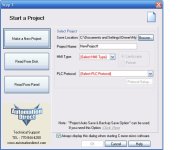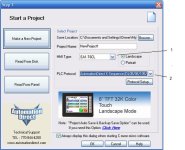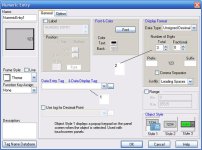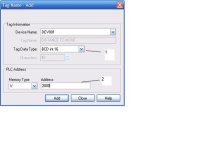Good morning to everyone!
I am new to PLC programming and for our college exam we have been asked to program a micro PLC dl05 to make a linear axis control of machine.
I am planning for this purpose to use an incremental encoder to count the number of pulses to make the axis machine go in the required position.
I would like to know how can i store the encoder resolution into the plc memory?? lets say my resolution will be 0.1 mm how to convert and store this value into a V memory location?
thanks a lot
I am new to PLC programming and for our college exam we have been asked to program a micro PLC dl05 to make a linear axis control of machine.
I am planning for this purpose to use an incremental encoder to count the number of pulses to make the axis machine go in the required position.
I would like to know how can i store the encoder resolution into the plc memory?? lets say my resolution will be 0.1 mm how to convert and store this value into a V memory location?
thanks a lot







